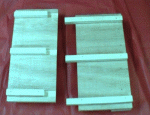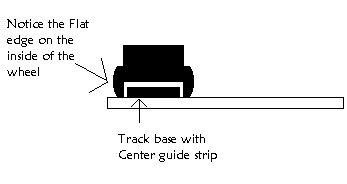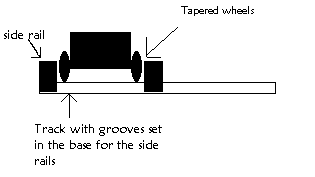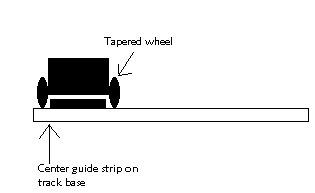|
There
are a few key differences in our Side Rail Track Versus the Traditional
Center guide track.
The
first to be noted is the ease of assembly.
Anyone who has spent any significant time re-assembling a Traditional
track every year for their races will tell you that ALIGNMENT is
the greatest issue you will encounter. With the design of
the Traditional Center Guide Track, you have no built in frame of
reference from section to section.
With our Side Rail Track, (when
assembled according to instructions) each
section has overlapping notches that AUTOMATICALLY line up each
section to one another. The result is a perfectly straight
track with minimal effort.
Below is an animation illustrating the interlocking feature of
the side rail kit.

(Please note the sections shown are not full
sections of the track. Smaller cross-sections were used for the
purposes of this example.)
The
next issue to be spoken of is probably the largest problem in the
face of racing, DERAILS.
With
our Side Rail Guide Track, we have all but eliminated the possibility
of a derail. Case in point, the State races of Tennessee have
been using our Side rail track for over 15 years, with literally
thousands and thousands of cars run. WITHOUT A SINGLE DERAIL.
EVER.
The key to this is the design of the track. In a Traditional
Center Guide track, the height of the center guide strip is on 1/4
of an inch. The height of the center strip is limited to the
space available under the car. Thus the strip is relatively
short. Which tends to bite the flat inside edge of most wheels.

This has been determined to be the leading cause of derail.
With our Center guide Track, there is no such limitation.
The height is more that 3/8 of an inch, which is more than half
of the wheel height.

This
tends to keep the car within the confines of its own lane.
Hence, NO MORE DERAILS EVER.
There are also, differences with the tapered wheel. Through
observing the following illustrations, one can clearly see the difference.


|





